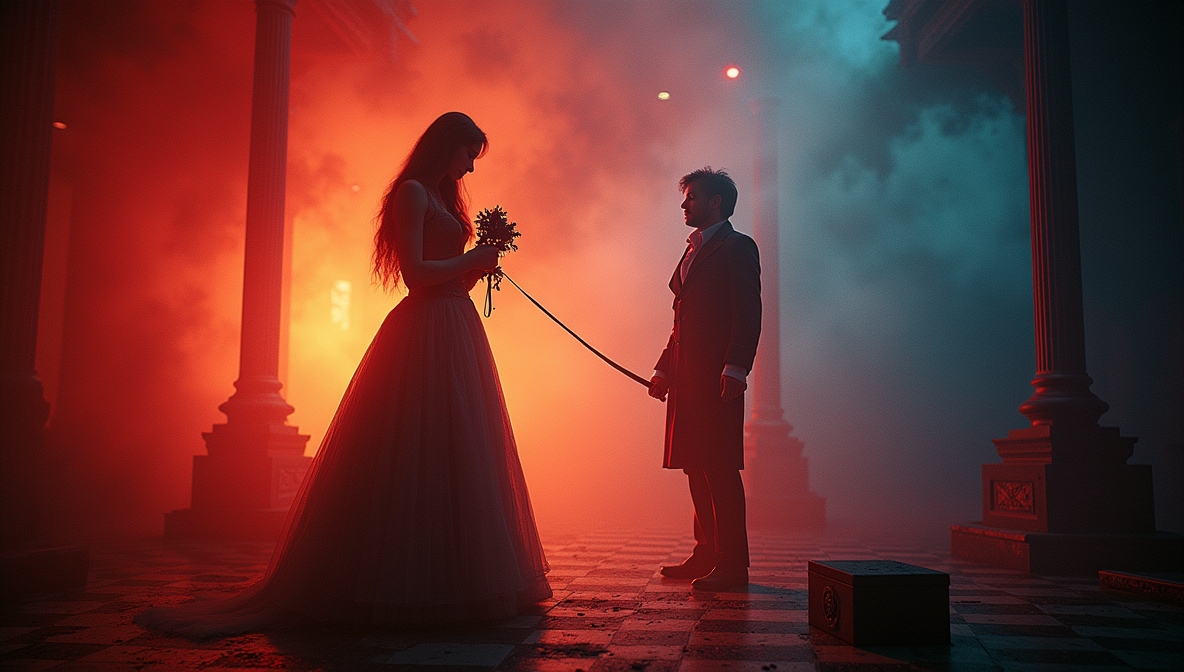William Shakespeare’s influence on modern storytelling remains unmatched. His works continue to shape narratives across literature, film, theater, and television. His mastery of character, plot, and language laid a foundation that writers still build upon today. From timeless themes to innovative storytelling techniques, his impact can be seen in the structure of modern narratives, the development of complex characters, and the enduring appeal of dramatic tension.
Timeless Themes That Resonate Today
Shakespeare explored universal human experiences that remain relevant. His themes of love, power, betrayal, ambition, and identity continue to shape contemporary stories.
Love and Tragedy
- Romantic conflicts in modern storytelling borrow heavily from Romeo and Juliet and Othello.
- The concept of star-crossed lovers appears in films like Titanic and West Side Story.
- Jealousy-driven tragedies mirror Shakespeare’s portrayal of destructive passion.
Power and Corruption
- Political dramas draw inspiration from Macbeth and Julius Caesar.
- Characters driven by ambition and moral compromise reflect the timeless struggle for control.
- TV series like House of Cards and Game of Thrones build upon Shakespearean themes of betrayal and downfall.
Identity and Transformation
- The theme of mistaken identity, seen in Twelfth Night and The Taming of the Shrew, appears in countless romantic comedies.
- Characters disguising themselves to achieve personal growth reflect his influence on self-discovery narratives.
- Films like She’s the Man and 10 Things I Hate About You rework these ideas into modern settings.
Character Archetypes Rooted in Shakespearean Drama
Shakespeare’s characters set the standard for complexity. His ability to craft flawed, multi-dimensional figures influenced modern storytelling in profound ways.
The Tragic Hero
- Defined by a fatal flaw, this character follows a rise-and-fall arc.
- Macbeth, Hamlet, and King Lear inspired figures like Michael Corleone (The Godfather) and Walter White (Breaking Bad).
- Writers continue to use the tragic hero’s downfall as a dramatic storytelling device.
The Comic Fool
- Shakespeare’s fools provide comic relief while delivering sharp social commentary.
- Characters like the Fool in King Lear and Puck in A Midsummer Night’s Dream influenced modern comedic sidekicks.
- From the Genie in Aladdin to Tyrion Lannister in Game of Thrones, this archetype remains popular.
The Manipulative Villain
- Iago (Othello) and Richard III shaped the cunning, deceitful antagonist.
- Figures like Frank Underwood (House of Cards) and the Joker (The Dark Knight) follow similar patterns of deception and ambition.
- The ability to control others through language and strategy remains a hallmark of Shakespearean-inspired villains.
Innovative Storytelling Techniques That Still Shape Narratives
Shakespeare’s approach to storytelling introduced techniques that continue to shape modern narratives.
Nonlinear Storytelling
- Plays like Hamlet and Othello use flashbacks and delayed revelations.
- Films like Pulp Fiction and Memento apply similar methods to create tension.
- The nonlinear structure keeps audiences engaged by revealing information strategically.
Metaphor and Symbolism
- Shakespeare infused his works with recurring motifs that deepened their meaning.
- The use of light and darkness in Romeo and Juliet symbolizes love and fate.
- Modern filmmakers use visual storytelling to achieve similar effects, as seen in The Great Gatsby and Blade Runner.
Breaking the Fourth Wall
- Characters like Richard III and Hamlet address the audience directly.
- This technique enhances engagement and builds a connection with the viewer.
- Shows like Fleabag and House of Cards use direct address to create intimacy and insight.
Shakespearean Influence in Modern Film and Television
Many filmmakers and showrunners borrow Shakespeare’s storytelling elements, sometimes adapting his works directly, other times drawing inspiration from his themes and characters.
Direct Adaptations
- Romeo + Juliet (1996) reimagined Shakespeare’s tragedy in a modern setting.
- 10 Things I Hate About You (1999) adapted The Taming of the Shrew into a high school romance.
- The Lion King (1994) follows the same narrative arc as Hamlet.
Theatrical Dialogue in Screenwriting
- Shakespeare’s influence extends to how dialogue is written in film and TV.
- Quentin Tarantino’s sharp, rhythmic exchanges mirror the poetic nature of Shakespearean monologues.
- Aaron Sorkin’s fast-paced, intellectually rich dialogue follows a similar pattern.
Complex Moral Dilemmas
- Shakespearean protagonists often wrestle with ethical questions.
- Shows like Breaking Bad and Mad Men feature characters who, like Hamlet, struggle with decisions that define their fate.
- The blending of hero and villain traits in protagonists reflects Shakespeare’s influence on moral complexity.
The Legacy of Shakespeare’s Storytelling Techniques
Shakespeare’s narratives laid the groundwork for how stories are told today. Writers across all mediums continue to draw from his themes, character archetypes, and structural innovations.
Why Shakespeare’s Influence Endures
- His exploration of human nature remains timeless.
- The dramatic arcs he perfected continue to engage audiences.
- His ability to balance tragedy and comedy serves as a model for storytelling across genres.
Where His Influence Can Be Seen Today
- Literature: Modern novels use Shakespearean themes of revenge, identity, and ambition.
- Theater: Playwrights adapt his works or build upon his dramatic techniques.
- Film and TV: Writers and directors integrate his narrative structures into scripts.
Shakespeare’s ability to craft compelling stories ensures that his influence remains strong. Writers continue to find inspiration in his works, adapting his ideas into contemporary settings while maintaining the emotional depth and dramatic tension that defined his storytelling.


